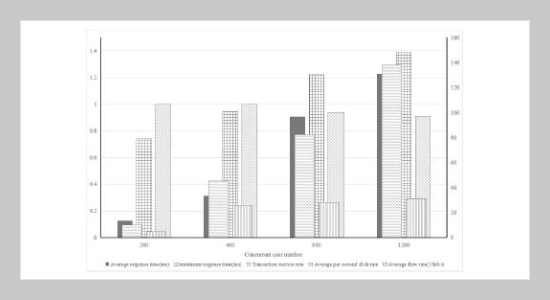1ChangChun GuangHua University, Changchun, Jilin province, 130000, China
2Northeast Normal University, Changchun, Jilin, 130000, China
Received:
May 19, 2022
Accepted:
June 23, 2022
Publication Date:
August 12, 2022
Copyright The Author(s). This is an open access article distributed under the terms of the Creative Commons Attribution License (CC BY 4.0), which permits unrestricted use, distribution, and reproduction in any medium, provided the original author and source are cited.
Download Citation: ||https://doi.org/10.6180/jase.202305_26(5).0004
ABSTRACT
With the advancement of education informatization, education management methods have gradually become information-based, and large amounts of saved data have been accumulated in teaching. How to maximize the use of these data has become a research difficulty. The whole process of data mining is introduced, including determining the object and target of mining, data preparation through data selection, data pre-processing, and data transformation. A decision tree model was generated and tested using the WEKA data mining tool based on the analysis and comparison of several standard algorithms for decision trees. The main factors affecting the quality of students were found in the extracted classification rules, which improved the data analysis and provided decision support for student training while integrating the data mining module into the comprehensive student information management model. Based on this article, an education management model based on data mining technology is proposed. This article first elaborates the challenges brought to education management in the context of big data and discusses the research status of data mining technology. Taking student management in education management as an example, an education management student information database is established, student information is summarized, and the potential value of mining information using multiple data mining algorithms is proposed. The student information test confirmed that the design was successful.
Keywords:
Data mining; Education management; Decision tree; Association rules
REFERENCES
- [1] R. Singh, M. Tiwari, and N. Vimal, (2013) “An empirical study of applications of data mining techniques for predicting student performance in higher education" Int. J. Comput. Sci. Mob. Comput 2: 53–57.
- [2] H. Xian and K. Madhavan, (2014) “Anatomy of scholarly collaboration in engineering education: a big-data bibliometric analysis" Journal of Engineering Education 103(3): 486–514.
- [3] C. Vaitsis, G. Nilsson, and N. Zary, (2014) “Visual analytics in healthcare education: exploring novel ways to analyze and represent big data in undergraduate medical education" PeerJ 2: e683.
- [4] R. Faulkner, J. W. Davidson, and G. E. McPherson, (2010) “The value of data mining in music education research and some findings from its application to a study of instrumental learning during childhood" International Journal of Music Education 28(3): 212–230.
- [5] J. Chamizo-Gonzalez, E. I. Cano-Montero, E. Urquia-Grande, and C. I. Muñoz-Colomina, (2015) “Educational data mining for improving learning outcomes in teaching accounting within higher education" The International Journal of Information and Learning Technology:
- [6] E. Yukselturk, S. Ozekes, and Y. K. Turel, (2014) “Predicting dropout student: An application of data mining methods in an online education program." European Journal of Open, Distance and e-learning 17(1): 118–133.
- [7] P. Kaur, M. Singh, and G. S. Josan, (2015) “Classification and prediction based data mining algorithms to predict slow learners in education sector" Procedia Computer Science 57: 500–508.
- [8] V. Kumar and A. Chadha. “An Empirical Study of the Applications of Data Mining Techniques in Higher Education. IJACSA-International Journal of Advanced Computer Science and Applications, 2 (3), 80-84. Retrieved from http://ijacsa. thesai. org. AUTHORS PROFILE Brijesh Kumar Bhardwa”. In: Computer Science) from Allahabad University, UP, India. Citeseer. 2011.
- [9] B. ¸Sen, E. Uçar, and D. Delen, (2012) “Predicting and analyzing secondary education placement-test scores: A data mining approach" Expert Systems with Applications 39(10): 9468–9476.
- [10] S. Natek and M. Zwilling, (2014) “Student data mining solution–knowledge management system related to higher education institutions" Expert systems with applications 41(14): 6400–6407.
- [11] T. Shen, Y. Nagai, and C. Gao, (2020) “Design of building construction safety prediction model based on optimized BP neural network algorithm" Soft Computing 24(11): 7839–7850.
- [12] M. M. Arcinas, G. S. Sajja, S. Asif, S. Gour, E. Okoronkwo, and M. Naved, (2021) “Role Of Data Mining In Education For Improving Students Performance For Social Change" Turkish Journal of Physiotherapy and Rehabilitation 32(3): 6519–6526.
- [13] B. K. Yousafzai, M. Hayat, and S. Afzal, (2020) “Application of machine learning and data mining in predicting the performance of intermediate and secondary education level student" Education and Information Technologies 25(6): 4677–4697.
- [14] F. Thabtah and D. Peebles, (2020) “A new machine learning model based on induction of rules for autism detection" Health informatics journal 26(1): 264–286.
- [15] L. F. Daghestani, L. F. Ibrahim, R. S. Al-Towirgi, and H. A. Salman, (2020) “Adapting gamified learning systems using educational data mining techniques" Computer Applications in Engineering Education 28(3): 568–589.
- [16] M. A. Rahman, B. Honan, T. Glanville, P. Hough, and K. Walker, (2020) “Using data mining to predict emergency department length of stay greater than 4 hours: Derivation and single-site validation of a decision tree algorithm" Emergency Medicine Australasia 32(3): 416–421.









